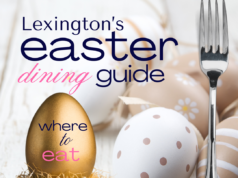Reader Ann Bransom responds to last week’s Ace blog post: Know Your Farmer. Know Your Food. Know Your Politics.
“….after reading Ace Weekly’s blog about the politics behind “Know Your Farmer, Know Your Food” and the subsequent reading of Ace’s review of Food, Inc (a movie I avoid like genital herpes) where I was assured the movie contained nothing as a graphic as what PETA wants to show me, I went spiraling into the dark place of feverish internet research and a marathon of opposing documentaries….”
An excerpt of Ann’s blog post follows:
The Evil Power of Ritz Crackers
by Ann Bransom
“What have I told you about watching that crap?”
Even as I approach 30, my Dad still monitors what I watch on television. In his defense, I have always enjoyed what he refers to as “bizarro world” subject matter.
As an adult, when left to my own devices I will consume all manner of the macabre, disturbing, or depressing. Film, documentaries, books, TV shows, articles – I gobble them up as long as they leave me just a little more cynical, melancholy, or amused by the absurdity of the human species.
There are subject matters, however, at which I respond by waving my banner of avoidance. Not just because I am likely to get either “What have I told you about watching that crap?” or “What have I told you about reading stuff on the internet?” from my dad, but because I know they will evoke one of the three emotions that I lack the coping skills to handle in healthy ways: stress, guilt, and/or powerlessness.
[One of these subjects] I avoid like the plague is food: where it comes from, how it’s made, who or what died so I could eat it, what it’s doing to my body, and what axis of evil is benefiting from my consumption of it. I know with one hundred percent certainty I am going to eat bacon. I’ve seen me do it. I don’t need to watch hundreds of pigs screaming like a herd of great aunts being stunned with captive bolt pistols and being exsanguinated, while all the baby piggies watch in horror.
Sooner or later, though, the guilt over being apathetic and hypocritical overpowers the avoidance of guilt over something else, and I peek through my fingers clutching the covers to throw over my head if necessary. So after reading Ace Weekly’s blog about the politics behind “Know Your Farmer, Know Your Food” and the subsequent reading of Ace’s review of Food, Inc (a movie I avoid like genital herpes) where I was assured the movie contained nothing as a graphic as what PETA wants to show me, I went spiraling into the dark place of feverish internet research and a marathon of opposing documentaries.
Le sigh.
Sorry, Dad.
I am totally on board with eating healthy. Approximately six weeks after giving birth, I presented this diagram of my post partum self. Not. Pretty.
My glorious ride of unlimited amounts of Indian food, store bought cake, and hormone-revenge eating things I don’t even like of my husband’s to get back at him for breathing too loudly has come crashing to a hault. I look around and find myself in the company of most Americans. Well above a healthy body mass index, lethargic, broken out, and STILL HUNGRY. The only way to feel full all day is to eat all day. The only way to eat all day without getting fat is to only eat healthy foods. It is as simple as that.
As simple as that concept is, the implementing of that concept is extremely difficult. We have our ancestors to thank. The caloric density of food that was readily available to our ancestors and the caloric expenditure involved in wrestling the other half of their food to the ground meant a biological imperative developed: “If you find food – EAT AS MUCH OF IT AS YOU CAN.” So to say that overcoming an innate instinct to hunt and gather as much as possible with as little caloric expenditure involved as you can is easy, is to greatly over simplify things.
Then add our modern economics into the hunter gatherer equation. If I take my dollar to the produce section, I can “gather” about 250 calories max. If I take my dollar to the snack aisle, I can “gather” about 1250 calories. That’s a tough sell to a caveman, and it’s an even tougher sell to a working mom trying to feed a family of three. That said, the long-term healthcare and environmental costs associated with those snack aisle purchases make the extra four dollars for the same amount of calories in the produce aisle pale in comparison.
However, if you are not in the upper middle class and above, liquidity is a real issue for your family. My husband and I work 50-60 hour weeks, live in a modest home in a decent neighborhood, drive used cars, and know that our daughter will be attending public school whether we (or she) like it or not. We live neither beyond our means nor neglecting to think about the future of each member of the family. So liquidity – the ability to have enough cash on hand to clothe, feed, and house our growing family – makes it very difficult for us to justify spending an extra $200-$300 a month to eat ONLY health food.
Then comes the guilt parade from the Locavores, Organibals, and Wholey rollers. They introduce a whole new set of complex issues with the food we eat. Now, not only do I have to figure out the balance between my family’s health and our economics, but I get to add a third, fourth, and fifth spinning plate to the balancing act: morality, politics, and environmentalism. These could each be their own blog, so how about an example to keep things concise?
Corn. Yummy, delicious corn. Pop it, grill it, boil it, sauté it, butter it up and suck it down. Why God even made those little kernels gold so we would know how valuable they were. Right?
WRONG.
Apparently, with every new corn field being planted on American soil we are slowly and assuredly constructing a massive doorway to hell through which Satan himself is going to spring in a blaze of burnt Orville Redenbacher.
Farmers need to be able to make a living, especially farmers whose crops they can no longer grow competitively (i.e. tobacco). So the government decides to subsidize a crop that will be easy to grow and highly profitable. They didn’t pick rhubarb or broccoli or onions or cane sugar. Nope, they picked corn. Why? Because corn can be used to make anything. Synthetic sweeteners, preservatives, dyes…you know…everything between the produce section and the dairy section. Corn doesn’t stop at the food aisles either. Batteries, toothpaste, cleaners, fuel…they all contain corn. You thought you were in love with your girlfriend, didn’t you? WRONG. That emotion was manufactured from CORN.
So what’s wrong with the government keeping farmers in business by making products and food that we all use and eat? Apparently, just about everything. Over production of corn is hurting the environment. It is also making life unpleasant for our little furry friends who would rather be eating grass, instead of CORN, making them so fat so fast that many become lame and deformed, which makes standing in the two feet of their own corn waste even more unpleasant before they are hauled off covered in poo to be slaughtered where the corn poo will contaminate the meat giving us salmonella and e-coli poisoning.
We overproduce so much corn in fact that NAFTA opened a flood gate of cheap exported corn to Mexico (see oil companies perform jig on stage left), putting Mexican corn farmers out of business. Those Mexican corn farmers have to work somewhere, so the big five food manufacturers recruit them as illegal labor and strike deals with immigration to only arrest illegal immigrants at a particular rate so as to not adversely affect production. We then buy all those corn products, which make us fat, give us high blood pressure and diabetes, and send us running to the pharmaceutical companies who are happy to dole us out expensive prescriptions. Paying for said prescriptions makes us even more likely to purchase more cheap corn products.
So basically, if I buy a box of Ritz crackers, I have hurt the environment, kept the local farmer poor, made the evil axis of pharmaceutical companies and Big Oil more money, screwed an immigrant, made school lunches less healthy, supported socialism, hobbled a furry friend, and poisoned my family. Everyone believes the line between personal responsibility and government intervention is really hard to figure out. Not really. I’m pretty sure that my box of Ritz crackers should not wield that kind of power. There you have it. The line. When Ritz crackers are bringing about the apocalypse unabated.
Obviously, there are enough subjects to cover here for fifty blog entries. So here is my question. What can I do?
*crickets*
Seriously. As a working mother who is the main bread winner in my family, I cannot take on immigration, politics, farmers’ rights, the FDA, the USDA, the Ozone layer, and cafeteria food this week. My husband and I do buy the majority of our produce at the farmers market, but beyond that we’re you’re typical Kroger automatons. I’m a marketer so I respond to numbered lists.
What are five things I can do differently right now to help the food crisis our nation is facing, keep my daughter healthy, and still be able to pay for her college education? Let’s see what you’ve got to help allay the guilt so I can get back to my Jeffrey Dahmer biographies and Real Housewives franchises where I feel safe and warm.
————
————-
Reader Christina Noll posed some similar questions — i.e., how to feed a family healthily and affordably — in her excellent March blog post Food Revolution, after watching the premiere of Jamie Oliver’s Food Revolution. (Naturally, there is a book tie-in to his food-rehab adventures in West Virginia.)
So, the readers have a challenge: Five Things. Post your comments here on the blog.
Michael Pollan distilled his In Defense of Food to: ““Eat food. Not too much. Mostly plants.” Then that book was further distilled some more to Food Rules. Read the NYT review here. It didn’t suggest anything new: shop the periphery of the grocery (where the real food is); don’t eat anything that wouldn’t rot; cook; eat meals; don’t eat anything that comes through your car window; don’t eat in the car; do eat at a table.
Questioned about the affordability of everything he advises, Pollan has been critiqued for adopting something of a “let them eat cake” model. Read The Grist’s notes here from the Splendid Table. While it may be true to say, “The goal should be to give people the money so they can afford to buy good food….The answer is to give people the buying power,” that does not answer the questions posed in Ann and Christina’s blogs. The closest thing he provides to addressing affordability is “pay more, eat less.”
Miranda Hileman’s year as a Compton Fellow addresses affordability and sustainability, but primarily as it relates to feeding the poor. Ann and Christina’s blog both ask questions about how middle-class families participate in the food revolution.
Here’s the Michael Pollan/Oprah video (which asks, but does not answer, the affordability question)









